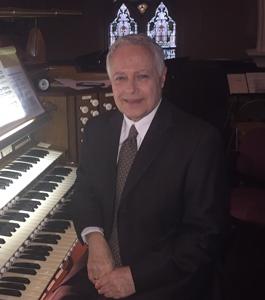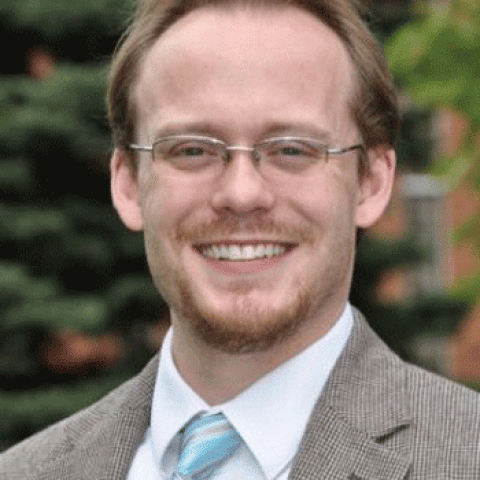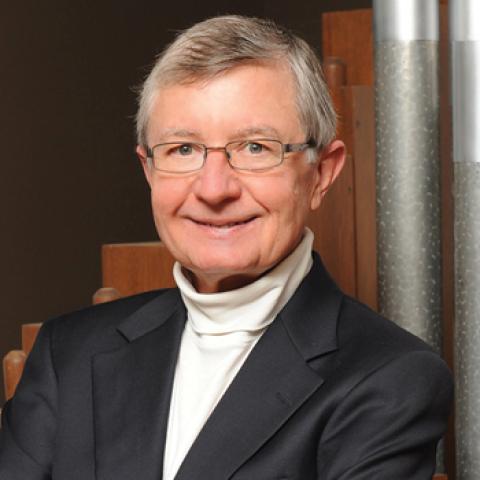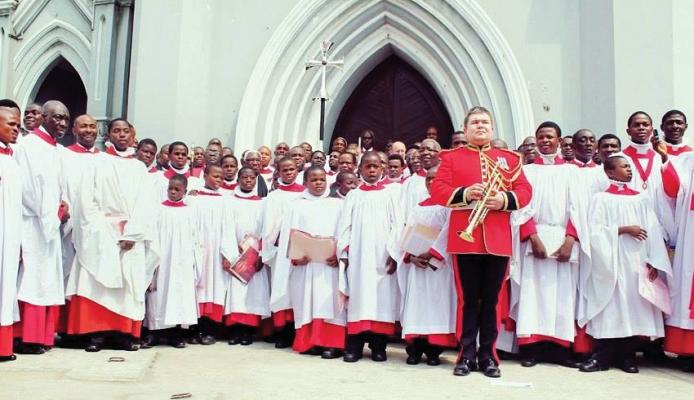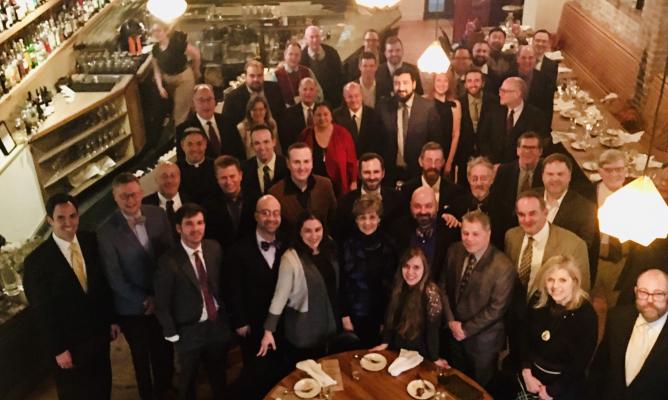Thomas H. Anderson
Thomas H. Anderson, 86, of North Easton, Massachusetts, died December 30, 2023. Born May 25, 1937, in Belfast, Northern Ireland, he met his late wife Susan in Belfast, where they grew up on the same street.
Anderson started working at age 14 as an apprentice pipe maker at an organ pipe manufacturer in Belfast. At age 19, he emigrated to the United States, where he worked at the Aeolian-Skinner Organ Company, Boston, Massachusetts, as a pipe maker. Later he started his own company, Thomas H. Anderson Organ Pipe Company. He traveled around the country working on various projects including the National Cathedral in Washington, D.C. In his later years, he traveled to teach others to make organ pipes.
Anderson’s wife Susan died December 31, 1996, almost 27 years before the date of his death; they were married 38 years. They raised four children who survive him: Gail McGill and her husband Mark of Raynham, Massachusetts; Thomas Anderson of Lake Wylie, South Carolina; Cheryl Dekeon of Haverhill, Massachusetts; and Elizabeth Lehr and her husband Donald of Berryville, Virginia. He is also survived by six grandchildren, two step-grandchildren, and three great-grandchildren.
The funeral for Thomas H. Anderson, Jr., was held January 6 at Southeast Funeral and Cremation Services, Easton, Massachusetts, with burial following at South Easton Cemetery. Memorial gifts may be made to Old Colony Hospice and Palliative Care (oldcolonyhospice.org).
Harold Gilchrest Andrews, Jr.
Harold Gilchrest Andrews, Jr., of High Point, North Carolina, died December 3, 2023. He was born March 31, 1932, in Framingham, Massachusetts, and grew up in Centerville on Cape Cod. At the age of eight, under the tutelage of Virginia Fuller, his first piano teacher, Andrews played services at the local Unitarian church. After his 1949 high school graduation, he attended Oberlin Conservatory of Music, Oberlin, Ohio, where he earned a Bachelor of Music degree in organ performance. After college, he served in the United States Army for two years as an organist at West Point. He then moved to Greensboro, North Carolina, playing first at First Friends Meeting House and then at Guilford Park Presbyterian Church. During this same period, he began his long tenure as a professor of organ at Greensboro College, where he remained until 1988. The C. B. Fisk, Inc., organ, Opus 102 (1993), at Finch Memorial Chapel of Greensboro College was donated and installed through his efforts. He also co-founded the Greensboro Chapter of the American Guild of Organists.
Leaving Guilford Park Church, Andrews took the position as organist and master of choristers at St. Mary’s Episcopal Church, High Point, where he would spend the next 55 years. While working at St. Mary’s, Andrews completed a Master of Music degree in organ and church music at Oberlin Conservatory and a Doctor of Musical Arts degree from Boston University.
Andrews founded and owned Organ Craft, a local organbuilding company. He built and installed pipe organs all over the east coast, including part of the organ at Christ United Methodist Church in Charlotte and the organ at Guilford Park Presbyterian Church in Greensboro. The organ at St. Mary’s in High Point was also significantly altered over the years by Andrews.
As an organist, he offered recitals in Europe, including at Canterbury Cathedral; St. Paul’s Cathedral, London; Saint-Sulpice, Paris; and Chartres Cathedral. In his retirement, he finished his manuscript for a study of music in the works of William Shakespeare.
Harold Gilchrest Andrews, Jr., is survived by one brother, Robert Francis Andrews. His funeral featuring Gabriel Fauré’s Requiem was held at St. Mary’s Episcopal Church, High Point, on January 27. Interment in the church columbarium followed. Memorials may be directed to the music endowment at St. Mary’s Episcopal Church, 108 West Farriss Avenue, High Point, North Carolina 27262.
Charles Edmund Callahan, Jr.
Charles Edmund Callahan, Jr., 72, died December 25, 2023, in Burlington, Vermont. He was born September 27, 1951, in Cambridge, Massachusetts. Callahan was a graduate of the Curtis Institute of Music, Philadelphia, Pennsylvania, and earned graduate degrees from The Catholic University of America, Washington, D.C. He held the Associate and Choirmaster certificates of the American Guild of Organists. In 2014 he was honored with the Distinguished Artist Award of the guild.
Callahan taught at Catholic University; Middlebury College, Middlebury, Vermont; Baylor University, Waco, Texas; Rollins College, Winter Park, Florida; and the Bermuda School of Music, Hamilton, Bermuda. He served as organist and music director for churches in Pennsylvania, Washington, D.C., New York, Vermont, and his native Massachusetts. Callahan moved to Orwell, Vermont, in 1988.
He was consulted often on the design of new organs and restorations and improvements of existing instruments. His two books on American organbuilding history, The American Classic Organ and Aeolian-Skinner Remembered, became standard reference works on 20th-century American organ history.
Callahan was a prolific composer; his compositions include commissions for Papal visitations to the United States and from Harvard University. His four-movement orchestral work, Mosaics, was premiered at the Cathedral Basilica of St. Louis, Missouri, and other works have been performed at Harvard, Yale, and Princeton universities.
Charles Callahan was laid to rest with his parents in Cambridge, Massachusetts. Memorial contributions in his memory may be made to the music programs at St. Mary’s Catholic Church, 326 College Street, Middlebury, Vermont 05753, or Cornwall Congregational Church, 2598 Route 30, Cornwall, Vermont 05753.
James P. Callahan
James P. Callahan of St. Paul, Minnesota, died December 28, 2023. Born in North Dakota and raised in Albany, Minnesota, he earned his Bachelor of Arts degree in 1964 from St. John’s University, Collegeville, Minnesota, and his Master of Fine Arts degree in piano and a Ph.D. in music theory and composition from the University of Minnesota, Minneapolis. In addition, he studied at the Mozarteum University, Salzburg, Austria, and Universität für Musik und darstellende Kunst Wien, Vienna, Austria. His teachers included Anton Heiller, organ; Willem Ibes and Duncan McNab, piano; and Paul Fetler, composition.
Callahan was Professor Emeritus at the University of St. Thomas, St. Paul, Minnesota, where he taught piano, organ, composition, music theory, and piano literature over a 38-year period, retiring in 2006. As an organist, Callahan performed recitals in the upper Midwest, New York, and Austria. His performances appeared on the nationally broadcast radio program Pipedreams. He was instrumental in overseeing the commissioning of the organ for the chapel at the University of St. Thomas, Gabriel Kney Opus 105, completed in 1987. On this instrument he recorded a disc for Centaur, James Callahan: Oberdoerffer, Reger, Rheinberger, Schmidt. He also performed solo piano recitals and made concerto appearances. In addition to his solo performances, he was a member of the Callahan and Faricy Duo piano team, performing throughout the upper Midwest.
James Callahan composed over 150 works for piano, organ, orchestra, band, opera, and chamber ensembles. Cantata for two choirs, brass, percussion, and organ premiered at St. John’s Abbey Church and was performed at the Cathedral of St. Paul in 1975. His Requiem was premiered by Leonard Raver in 1990 at the University of St. Thomas. Callahan’s music was published by McLaughlin-Reilly, GIA, Paraclete Press, Abingdon Press, and Beautiful Star Publishing. Awards included a study grant from the National Endowment for the Humanities and a Bush Artist Fellowship.
Quentin Faulkner
Quentin Faulkner, 80, died December 30, 2023, in Houston, Texas. He was Larson Professor of organ and music theory/history (emeritus) at the University of Nebraska-Lincoln, a writer of scholarly books in the areas of church music and J. S. Bach performance practice, the translator of German treatises of the 17th and 18th centuries, and an organ recitalist.
Faulkner earned his undergraduate degree in organ and church music from Westminster Choir College, Princeton, New Jersey, where he studied organ with George Markey and Alexander McCurdy. He received graduate degrees in sacred music and theology from Perkins School of Theology, Southern Methodist University, Dallas, Texas, where he studied conducting with Lloyd Pfautsch, organ with George Klump, and liturgics with James White. Faulkner completed his doctoral studies at the School of Sacred Music, Union Theological Seminary, New York City, where he studied organ with Alec Wyton. Each of these schools subsequently awarded him its distinguished alumni award for his contributions to the field of church music. While a student in New York City, he served for three years as assistant organist at the Cathedral Church of St. John the Divine, during which time he led the musical celebration honoring Wyton at his retirement and was the organist for Duke Ellington’s funeral.
For 32 years Faulkner served on the faculty at the University of Nebraska-Lincoln, where he developed a comprehensive cycle of courses in church music and received numerous teaching awards. He and his colleague George Ritchie were co-coordinators of a distinguished series of organ conferences at the university, each conference with a distinct topic of scholarly investigation and culminating in the first conference held in Naumburg, Germany, at the newly restored 1746 Hildebrandt organ in St. Wenzel’s Church. In 1998 Faulkner was awarded a Fulbright grant to teach as guest professor at the Evangelische Hochschule für Kirchenmusik in Halle, Germany, a position to which he returned for the academic year 2006–2007 following his retirement from the University of Nebraska.
Faulkner’s professional career included both academic and practical pursuits. He was equally respected for his scholarly investigation in the field of church music (Wiser than Despair: The Evolution of Ideas in the Relationship of Music and the Christian Church, Greenwood Press, 1996) and in historical performance practice of the organ works of Bach (J. S. Bach’s Keyboard Technique: A Historical Introduction, Concordia, 1984; The Registration of J. S. Bach’s Organ Works, Wayne Leupold Editions, 2008; Johann Sebastian Bach, The Complete Organ Works, Series II, Volume I, The Performance of the Organ works: Source Readings, Leupold Editions, 2020). He translated historic German treatises into English, and then edited and annotated the translations to make them accessible to contemporary students and scholars (Jacob Adlung, Musica mechanica organoedi, Parts 1, 2, and 3, Zea E-Books, 2011; Michael Praetorius, Syntagma Musicum II: De Organographia, Parts III–V, Zea E-Books, 2014).
Faulkner reveled in working at the intersections of various disciplines, particularly enjoying the interplay of the scholarly and the performing musician and extensively studying the relationships between and among religion, culture, and the arts. He served as a member of the advisory board for the Encyclopedia of Keyboard Instruments for Garland Publishing Co., as consultant for the J. S. Bach Tercentenary publishing project of Concordia Publishing House, as editor for performance issues for the Leupold Edition of J. S. Bach’s organ works, and as a member of the advisory board of the Institute of Sacred Music at Yale University, New Haven, Connecticut. He also led multiple tours of Bach’s Organ World in eastern Germany, sharing his passion and knowledge with participants as they studied, played, and listened to instruments with direct connections to J. S. Bach.
Throughout his career and in retirement, Faulkner remained a performing musician, presenting organ recitals, workshops, and lectures. He and his wife served as church musicians in Dothan, Alabama; New York City; Lincoln, Nebraska; and Greenfield, Massachusetts. He was particularly concerned with music in small churches and wrote numerous practical articles for professional journals, composed anthems for small choirs, and served as a clinician for more than fifty church music workshops in Nebraska. He served the American Guild of Organists on various local and national committees and as its national councilor for education. He was an honorary lifetime member of the Lincoln Chapter of the AGO.
Quentin Faulkner is survived by his wife of 56 years, Mary Murrell (Bennett) Faulkner, three brothers, a daughter and son-in-law, a son and daughter-in-law, and four grandchildren. A memorial service will be held April 20 at Christ Church Cathedral, Houston, Texas. Memorial contributions may be made to the Alzheimer’s Association (Attention: Donor Services, 225 North Michigan Avenue, Floor 17, Chicago, Illinois 60601; alz.org/donate), Church Music Institute (5923 Royal Lane, Dallas, Texas 75230; churchmusicinstitute.org/donate), or the charity of one’s choice.
Brian E. Jones
Brian E. Jones, 80, organist and choir director, died November 17, 2023. A native of Duxbury, Massachusetts, he began piano studies at age eight and discovered the pipe organ soon thereafter. During his first visit to Trinity Church, Copley Square, Boston, Massachusetts, as an eager ten-year-old, he was said to have exclaimed, “I want to be the organist here someday!” Some three decades later, his dream became a reality.
After earning an undergraduate degree from Oberlin Conservatory of Music, Jones landed a teaching position at Noble and Greenough School, Dedham, a post he would hold for the next twenty years. Concurrently he completed the Master of Music program at Boston University. While at Noble and Greenough he conducted numerous choral groups and expanded the music program to include the production of a wide variety of musicals.
Soon after commencing his teaching career, Jones was appointed music director of the Dedham Choral Society, a position he held for 27 years. During his tenure, the group grew in size from 25 to 150 members, expanding their audiences by performing in Symphony Hall and Jordan Hall in Boston. In 1984 Jones fulfilled his childhood dream when he was appointed director of music at Trinity Church, Boston. Over the next two decades he and his choirs produced five recordings, including the Christmas CD, Candlelight Carols. In addition to his work as a choral conductor, Jones enjoyed a solo organ career, performing concerts and dedicatory recitals in churches and cathedrals throughout the United States and England. Upon assuming the mantle Emeritus Director of Music and Organist at Trinity Church in 2004, Jones accepted interim positions from as far afield as Albuquerque, New Mexico. In 2007 a number of former Trinity choir members coalesced to form The Copley Singers under Jones’s direction. This semi-professional group of musicians began performing together several times each year, most notably during the holiday season.
Brian E. Jones is survived by his husband, Michael Rocha, with whom he shared the past 35 years, as well as two children, Eliza Beaulac and her husband, Joe, and Nat Jones and his wife, Kiera; four grandchildren and one great-grandson. A celebration of life is planned for spring. Memorial gifts in memory of Brian Jones may be made to the Parkinson’s Foundation (parkinson.org).
Uwe Pape
Uwe Pape, 87, died August 13, 2023, in Berlin, Germany. He was born May 5, 1936, in Bremen, Germany. In his early life, he studied mathematics, physics, pedagogy, and philosophy at Georg-August-Universität, Göttingen, graduating in 1959, earning a doctorate in computing technology at Technische Universität Braunschweig in 1971.
From 1971 to 2001 Pape was professor of business informatics at the Technische Universität Berlin. He was visiting professor at the Massachusetts Institute of Technology, Cambridge, Massachusetts, in 1974 and in 1984–1985; at the University of Maryland, College Park, in 1975; at the University of Texas at Austin in 1976; and at the University of Szczecin, Poland, from 1988 until 1998.
Pape was recognized worldwide for his expertise in pipe organs, especially historic mechanical-action instruments. Pape had his first contact with organbuilding in 1953 at the Liebfrauenkirche, Bremen, where he studied with Harald Wolff and had contact with the organ builder Paul Ott. Pape began to document the organs of the Braunschweig Lutheran Church in 1959. In 1962 he founded a publishing house for works on organbuilding history, which exists today as Pape Verlag Berlin. He became a freelance organ expert for regional churches and foundations in Berlin, Bremen, Lower Saxony, and Saxony. From 1985 to 2016 he led a research project on organ documentation that resulted in an organ database at the Technische Universität Berlin. With Paul Peeters of Gothenburg and Karl Schütz of Vienna, Pape was one of the founders of the International Association for Organ Documentation (IAOD) in 1990. He made significant contributions to the documentation of historic north German organs. Among his many book-length publications is The Tracker Organ Revival in America/Die Orgelbewegung in Amerika, first published in 1978. One of his most recent publications is Organographia Historica Hildesiensis: Orgeln und Orgelbauer in Hildesheim, printed in 2014. For The Diapason, he wrote “Documentation of Restorations,” which appeared in the December 2006 issue, pages 20–22.
Alice Stuart Parker
Alice Stuart Parker, 98, born December 16, 1925, in Boston, Massachusetts, died December 24, 2023, in Hawley, Massachusetts. Having grown up in Winchester, Massachusetts, she graduated from Smith College, Northampton, Massachusetts, in 1947, having studied organ and composition. After earning a Master of Music degree in choral conducting from The Juilliard School in New York City two years later, she began teaching in a high school. Parker would then study and begin a long collaboration with Robert Shaw and the Robert Shaw Chorale. She would meet and marry one of the chorale’s singers, Thomas F. Pyle, in 1954.
As a composer she would pen more than 500 choral works and arrangements, from choral anthems to cantatas and operas. In 1985 Parker founded Melodious Accord, which presents choral concerts, singing workshops, and other events. The Musicians of Melodious Accord, a 16-member chorus, made several recordings with her. Parker authored books including The Anatomy of Melody in 2006 and The Melodious Accord Hymnal in 2010, both available from GIA Publications. She conducted masterclasses and seminars widely.
Alice Stuart Parker was predeceased by her husband in 1976. Survivors include her sons David Pyle and Timothy Pyle; daughters Katharine Bryda, Mary Stejskal, and Elizabeth Pyle; 11 grandchildren; and six great-grandchildren.
Michael Radulescu
Michael Radulescu, 80, born June 19, 1943, in Bucharest, Romania, died December 23, 2023. He studied organ and conducting with Anton Heiller and Hans Swarowsky in Vienna, Austria, at the Academy (now University) of Music and Performing Arts, where he taught as professor of organ from 1968 to 2008. His career encompassed work as a composer, organist, and conductor. With his debut in 1959 he presented concerts throughout Europe, North America, Australia, South Korea, and Japan. He regularly presented guest lectures and masterclasses in Europe and overseas, focusing mainly on the interpretation of Bach’s organ and major choral works.
As a composer, Radulescu wrote sacred music, works for organ, voice and organ, choral and chamber music, and orchestral works. He was frequently engaged as a jury member in international organ and composition competitions and as an editor of early organ music. Radulescu conducted international vocal and instrumental ensembles in performances of major choral works. As an organist, he recorded among other items Bach’s complete works for organ, without any technical manipulation.
For his musical and pedagogical contributions, Radulescu was awarded the Goldene Verdienstzeichen des Landes Wien in 2005. In 2007 he received the Würdigungspreis für Musik from the Austrian Ministry of Education and Art. In December 2013 Michael Radulescu’s book on J. S. Bach’s spiritual musical language, Bey einer andächtig Musiq: Schritte zur Interpretation von Johann Sebastian Bachs geistlicher Klangrede anhand seiner Passionen und der h-Moll-Messe, focusing on the two passions and the B-Minor Mass, was published. For The Diapason, his article, “J. S. Bach’s Organ Music and Lutheran Theology: The Clavier-Übung Third Part,” was printed in the July 2019 issue, pages 16–21.
